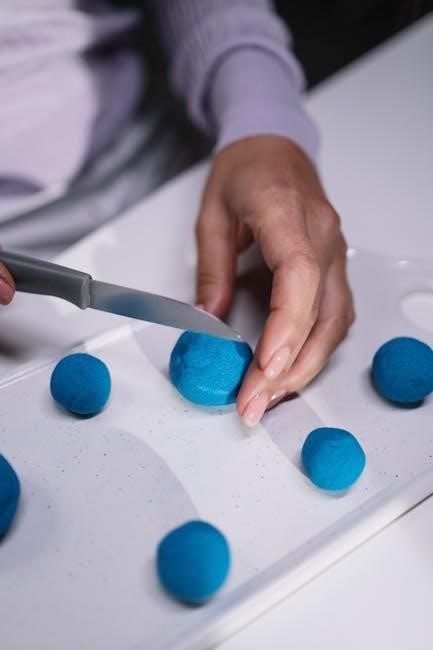Integrative Manual Therapy (IMT) is a holistic, hands-on approach addressing pain, injuries, and body dysfunction. It combines precise techniques to restore function, mobility, and overall health.

1.1 Definition and Overview
Integrative Manual Therapy (IMT) is a unique, hands-on approach that combines precise diagnostic and treatment techniques to address pain, injuries, and body dysfunction. It focuses on restoring function, mobility, and overall health by releasing restrictive tissue patterns and promoting cellular-level healing. IMT considers the interconnectedness of the body’s systems, offering a holistic approach that goes beyond symptom relief. This therapy is client-centered, emphasizing empowerment and self-healing through tailored treatments. By integrating manual techniques with a deep understanding of human physiology, IMT provides a comprehensive method for achieving wellness and optimal body function.
1.2 Historical Background
Integrative Manual Therapy (IMT) has its roots in various manual therapy traditions, evolving over decades to become a comprehensive approach. It draws from osteopathic principles, soft tissue techniques, and rehabilitative practices, blending them into a unified system. Early pioneers in manual therapy laid the groundwork, while modern research has refined IMT’s methodologies. The therapy gained prominence in the 21st century as holistic health practices grew in popularity. By integrating diverse therapeutic modalities, IMT addresses the body as a whole, reflecting a shift toward more comprehensive and patient-centered care.

Key Components of IMT
IMT combines manual therapy, postural reeducation, rehabilitation Pilates, and pelvic floor therapy, integrating diverse techniques to optimize patient health and address dysfunction holistically.
2.1 Core Techniques and Modalities
IMT employs a range of hands-on techniques and modalities to address body dysfunction. Key methods include manual therapy, postural reeducation, and rehabilitation Pilates. These approaches work synergistically to release tissue restrictions, restore mobility, and enhance overall function. Pelvic floor therapy is also integral, focusing on core stability and alignment. Diagnostic methodologies guide treatment, ensuring precise interventions. Together, these techniques create a comprehensive framework for healing, addressing both structural and functional imbalances. By integrating these modalities, IMT provides a holistic approach to wellness, optimizing physical and emotional health.
2.2 Role of Manual Therapy in IMT
Manual therapy is a cornerstone of IMT, offering a hands-on approach to diagnose and treat pain, dysfunction, and disease. It involves precise techniques to release restrictive tissues, restore joint mobility, and improve circulation. By addressing structural and functional imbalances, manual therapy enhances the body’s natural healing processes. This modality is particularly effective for acute and chronic conditions, promoting relaxation, reducing inflammation, and improving overall physical function. In IMT, manual therapy is often combined with other modalities like Pilates and pelvic floor therapy to create a comprehensive treatment plan. Its adaptability makes it suitable for diverse patient needs, from rehabilitation to maintenance of wellness.
Benefits of Integrative Manual Therapy
IMT addresses pain, restores function, and enhances mobility, promoting overall wellness. It supports the body’s natural healing, improving quality of life holistically and sustainably.
3.1 Pain Management and Relief
Integrative Manual Therapy (IMT) offers effective pain management by addressing the root causes of discomfort. Through targeted hands-on techniques, IMT releases restrictive tissues, reduces inflammation, and restores proper function. By focusing on both structural and functional imbalances, IMT provides relief from acute and chronic pain. It enhances circulation, relaxes tense muscles, and promotes healing at the cellular level. This holistic approach not only alleviates symptoms but also supports long-term wellness, enabling individuals to regain control over their bodies and improve their quality of life. IMT’s combination of manual therapy and complementary modalities makes it a versatile solution for managing pain and achieving sustainable relief.
3.2 Enhanced Mobility and Flexibility
Integrative Manual Therapy (IMT) significantly improves mobility and flexibility by addressing restrictive tissue patterns and joint dysfunction. Through precise, hands-on techniques, IMT releases tension in muscles, tendons, and ligaments, allowing for greater range of motion. This approach not only enhances physical movement but also promotes better posture and reduces stiffness. By restoring balance to the body’s structural and functional systems, IMT enables individuals to move more freely and comfortably. Whether for athletes seeking improved performance or individuals recovering from injuries, IMT’s holistic approach fosters sustainable mobility and flexibility, empowering people to maintain active, healthy lifestyles.
The Science Behind IMT
The science behind IMT involves understanding its physiological effects on body systems, promoting healing through precise techniques addressing dysfunction at the cellular level to restore balance.
4.1 Physiological Effects on Body Systems
Integrative Manual Therapy (IMT) works by addressing dysfunction at the cellular level, promoting systemic balance. It impacts the fascial, nervous, and musculoskeletal systems, reducing pain and inflammation. Techniques like soft tissue mobilization and joint mobilization enhance blood flow and lymphatic drainage, improving overall circulation. IMT also influences the nervous system, calming overactive responses and restoring normal neural function. By targeting these systems, IMT fosters an environment for self-healing, reducing chronic pain and improving mobility. This holistic approach ensures that the body functions harmoniously, leading to enhanced wellness and long-term health benefits. The physiological effects of IMT are supported by its ability to address root causes of dysfunction, making it a comprehensive therapeutic modality.
4.2 Evidence-Based Research and Studies

Evidence-based research highlights the effectiveness of Integrative Manual Therapy (IMT) in addressing pain, dysfunction, and disease. Studies by MDR Haque (2023) and AM McCaffrey (2007) demonstrate its benefits, with 203 and 168 citations respectively. IMT’s ability to reduce pain and restore function is supported by physiological studies showing its impact on fascial, nervous, and musculoskeletal systems. Research also emphasizes IMT’s role in enhancing mobility and reducing inflammation, making it a validated approach for chronic conditions and sports injuries. The integration of manual therapy with other modalities further strengthens its scientific backing, ensuring a comprehensive and evidence-based treatment option for overall wellness.

Who Can Benefit from IMT?
Integrative Manual Therapy (IMT) benefits athletes, individuals with chronic conditions, and those seeking holistic wellness. It addresses pain, injuries, and dysfunction, promoting overall health and mobility.
5.1 Athletes and Sports Injuries
Integrative Manual Therapy (IMT) is highly beneficial for athletes and individuals with sports injuries. It addresses pain, inflammation, and restricted movement, promoting faster recovery and optimal performance.
By targeting soft tissue, joints, and fascia, IMT enhances flexibility, strength, and mobility, reducing the risk of re-injury. Its holistic approach supports the body’s natural healing process.
Athletes often use IMT to manage chronic pain, improve range of motion, and restore balance after intense physical activity. It complements other therapies, making it a valuable tool for maintaining peak performance and overall wellness.
5.2 Individuals with Chronic Conditions
Integrative Manual Therapy (IMT) offers significant benefits for individuals with chronic conditions, providing relief from pain and improving overall well-being. Chronic conditions often involve long-term pain, limited mobility, and dysfunction, which IMT addresses through targeted, non-invasive techniques.

By releasing tissue restrictions and promoting cellular healing, IMT helps restore function and reduce discomfort. It is particularly effective for conditions like chronic pain, fibromyalgia, and degenerative joint diseases.
IMT’s holistic approach supports the body’s natural healing processes, making it a valuable option for those seeking long-term management of chronic health issues.
Integrative Manual Therapy (IMT) is a comprehensive approach to wellness, improving mobility, reducing pain, and enhancing overall health. It plays a vital role in holistic health by addressing the body’s interconnected systems and supporting natural healing processes, making it an essential component of overall wellness strategies.

6.1 The Role of IMT in Overall Wellness
Integrative Manual Therapy (IMT) plays a pivotal role in promoting overall wellness by addressing the interconnected systems of the body. It enhances physical, emotional, and mental health through precise, hands-on techniques that restore function and mobility. By targeting pain, injuries, and dysfunction at the cellular level, IMT supports the body’s natural healing processes, fostering resilience and balance. Its holistic approach integrates with other therapies, such as Pilates and pelvic floor therapy, to create a comprehensive wellness plan. IMT not only alleviates symptoms but also empowers individuals to achieve long-term well-being, making it a cornerstone of integrative care;

